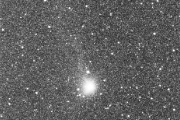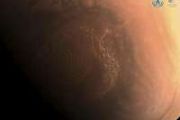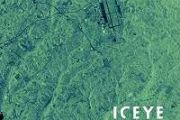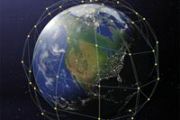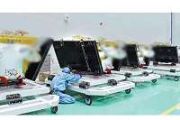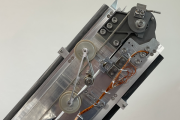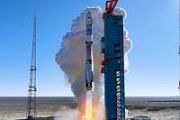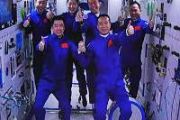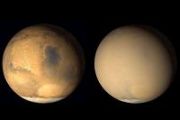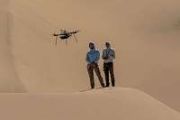
Copernical Team
Sidus Space completes CDR for Dutch laser comms satellite
 Sidus Space (NASDAQ: SIDU) has successfully passed the critical design review (CDR) for its LizzieSat NL, a laser communication satellite developed under a contract with The Netherlands Organization (TNO). This key achievement confirms the technical framework for the satellite's design and triggers a milestone payment as part of the multimillion-dollar agreement.
The completion of the CDR
Sidus Space (NASDAQ: SIDU) has successfully passed the critical design review (CDR) for its LizzieSat NL, a laser communication satellite developed under a contract with The Netherlands Organization (TNO). This key achievement confirms the technical framework for the satellite's design and triggers a milestone payment as part of the multimillion-dollar agreement.
The completion of the CDR Radiation belt exploration boosted by smallsat constellation mission CORBES
 In line with the COSPAR Scientific Roadmap on Small Satellites for Space Science, the CORBES mission, proposed by the Small Geostationary Radiation Belt (SGRB) division of TGCSS, is advancing Earth's radiation belt research through a constellation of multi-CubeSats. This constellation has been under development for two years and aims to conduct a fast-paced survey of Earth's radiation belts.
In line with the COSPAR Scientific Roadmap on Small Satellites for Space Science, the CORBES mission, proposed by the Small Geostationary Radiation Belt (SGRB) division of TGCSS, is advancing Earth's radiation belt research through a constellation of multi-CubeSats. This constellation has been under development for two years and aims to conduct a fast-paced survey of Earth's radiation belts. Aston University researcher pioneers optical technique for transformative diagnostics
 A researcher from Aston University has developed an innovative optical technique that uses a specialized form of light, known as Orbital Angular Momentum (OAM), potentially transforming non-invasive medical diagnostics and advancing optical communications.
Led by Professor Igor Meglinski, the research demonstrates how OAM light can penetrate skin and biological tissues with unprecedented s
A researcher from Aston University has developed an innovative optical technique that uses a specialized form of light, known as Orbital Angular Momentum (OAM), potentially transforming non-invasive medical diagnostics and advancing optical communications.
Led by Professor Igor Meglinski, the research demonstrates how OAM light can penetrate skin and biological tissues with unprecedented s Seven ways satellite navigation supports sustainability efforts
 Satellite navigation technology plays an important role in advancing sustainability across various industries. Through ESA's Navigation Innovation and Support Programme (NAVISP), companies are pioneering applications of positioning, navigation and timing (PNT) to drive environmentally friendly solutions across sectors like transportation, agriculture, energy, and urban planning.
NAVISP-bac
Satellite navigation technology plays an important role in advancing sustainability across various industries. Through ESA's Navigation Innovation and Support Programme (NAVISP), companies are pioneering applications of positioning, navigation and timing (PNT) to drive environmentally friendly solutions across sectors like transportation, agriculture, energy, and urban planning.
NAVISP-bac Progress of Radiation Belt Exploration Enhanced by Small Satellite Constellation Mission CORBES
 In line with the COSPAR Scientific Roadmap on Small Satellites for Space Science, the CORBES mission, proposed by the Small Geostationary Radiation Belt (SGRB) division of TGCSS, is advancing Earth's radiation belt research through a constellation of multi-CubeSats. This constellation has been under development for two years and aims to conduct a fast-paced survey of Earth's radiation belts.
In line with the COSPAR Scientific Roadmap on Small Satellites for Space Science, the CORBES mission, proposed by the Small Geostationary Radiation Belt (SGRB) division of TGCSS, is advancing Earth's radiation belt research through a constellation of multi-CubeSats. This constellation has been under development for two years and aims to conduct a fast-paced survey of Earth's radiation belts. Highest-energy gamma rays detected at Milky Way's core
 At the High-Altitude Water Cherenkov (HAWC) observatory, positioned 13,000 feet above sea level on Mexico's Sierra Negra volcano, scientists have uncovered unprecedented levels of gamma-ray energy from the center of the Milky Way. This groundbreaking observation, led by an international team including researchers from Los Alamos National Laboratory, has recorded gamma rays exceeding 100 teraelec
At the High-Altitude Water Cherenkov (HAWC) observatory, positioned 13,000 feet above sea level on Mexico's Sierra Negra volcano, scientists have uncovered unprecedented levels of gamma-ray energy from the center of the Milky Way. This groundbreaking observation, led by an international team including researchers from Los Alamos National Laboratory, has recorded gamma rays exceeding 100 teraelec Saturn's moon Titan may have thick insulating methane ice crust up to six miles
 Saturn's largest moon, Titan, stands out as the only celestial body besides Earth with a dense atmosphere and surface liquids, such as rivers, lakes, and seas. Due to its frigid environment, these liquids comprise hydrocarbons like methane and ethane, while Titan's surface primarily consists of solid water ice. Recent findings led by planetary scientists at the University of Hawai'i at Manoa sug
Saturn's largest moon, Titan, stands out as the only celestial body besides Earth with a dense atmosphere and surface liquids, such as rivers, lakes, and seas. Due to its frigid environment, these liquids comprise hydrocarbons like methane and ethane, while Titan's surface primarily consists of solid water ice. Recent findings led by planetary scientists at the University of Hawai'i at Manoa sug Red Rocks with Green Spots at 'Serpentine Rapids'
 After discovering and sampling the "leopard spots" of "Bright Angel," it became apparent that Perseverance's journey of discovery in this region was not yet finished. Approximately 20 sols (Martian days) after driving south across Neretva Vallis from Bright Angel, the rover discovered the enigmatic and unique red rocks of "Serpentine Rapids."
At Serpentine Rapids, Perseverance used its abr
After discovering and sampling the "leopard spots" of "Bright Angel," it became apparent that Perseverance's journey of discovery in this region was not yet finished. Approximately 20 sols (Martian days) after driving south across Neretva Vallis from Bright Angel, the rover discovered the enigmatic and unique red rocks of "Serpentine Rapids."
At Serpentine Rapids, Perseverance used its abr SpaceX sends 22 Starlink satellites into orbit in record-setting launch
 SpaceX on Saturday successfully launched a Falcon 9 rocket carrying a payload of 22 Starlink Internet communications satellite from Cape Canaveral in Florida, marking a state record 73rd orbital rocket launch this year.
The Falcon 9 rose from Launch Complex 40 at the Kennedy Space Center as scheduled at 5:47 p.m. EDT.
Less than 10 minutes later, the first-stage booster used in 18
SpaceX on Saturday successfully launched a Falcon 9 rocket carrying a payload of 22 Starlink Internet communications satellite from Cape Canaveral in Florida, marking a state record 73rd orbital rocket launch this year.
The Falcon 9 rose from Launch Complex 40 at the Kennedy Space Center as scheduled at 5:47 p.m. EDT.
Less than 10 minutes later, the first-stage booster used in 18 Kremlin denies report of Musk-Putin secret talks
 The Kremlin on Friday denied a report by The Wall Street Journal that Russian President Vladimir Putin and billionaire SpaceX founder Elon Musk had been in regular secret contact since 2022.
"It's all untrue, absolutely false information published in the newspaper," Kremlin spokesman Dmitry Peskov told journalists.
The WSJ report claimed Putin had discussed personal and political matter
The Kremlin on Friday denied a report by The Wall Street Journal that Russian President Vladimir Putin and billionaire SpaceX founder Elon Musk had been in regular secret contact since 2022.
"It's all untrue, absolutely false information published in the newspaper," Kremlin spokesman Dmitry Peskov told journalists.
The WSJ report claimed Putin had discussed personal and political matter 






